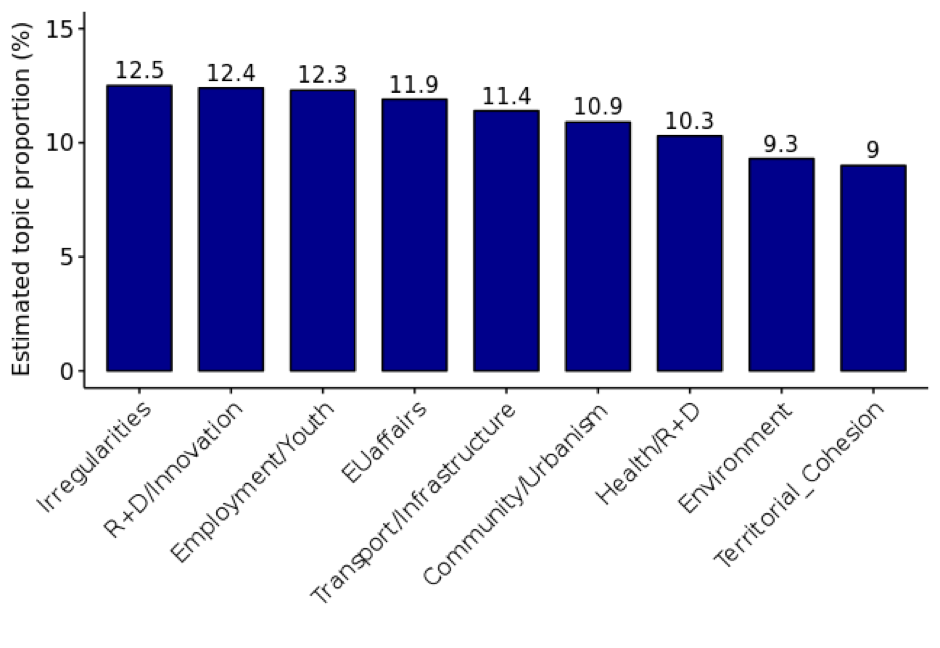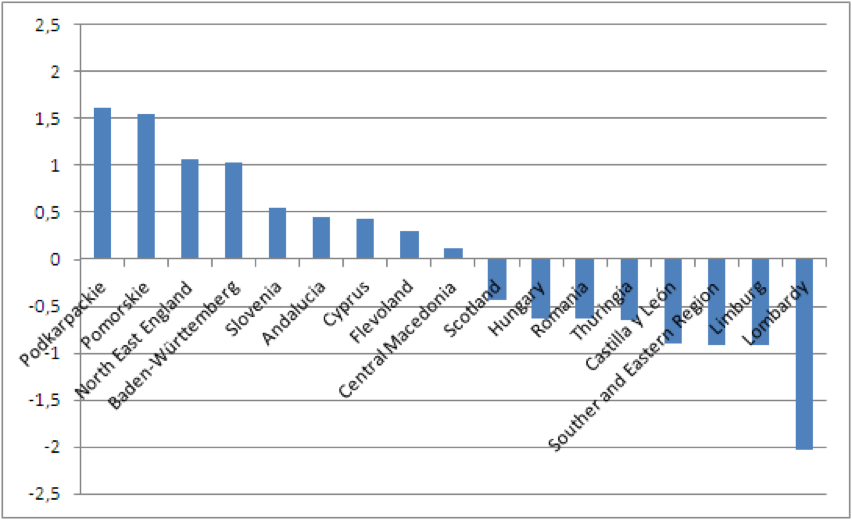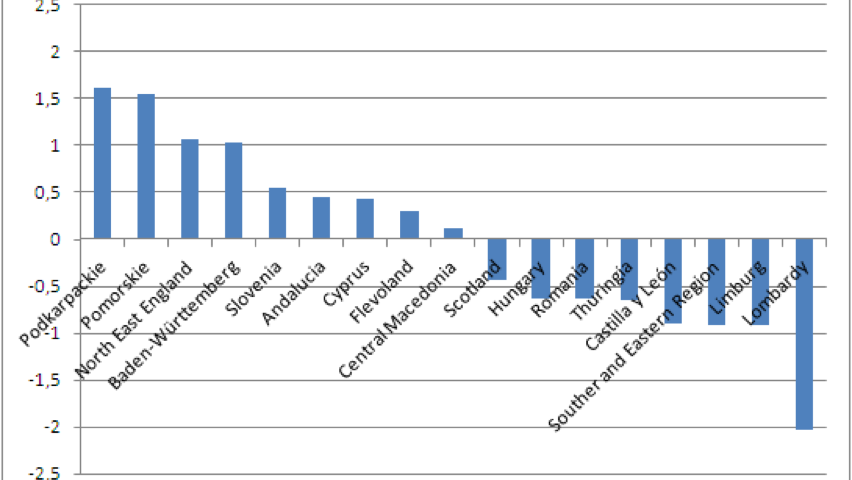
Voices from the EU Regions
February 13, 2018
How is Cohesion Policy presented in the media across territorial levels: Insights from a computational text analysis
May 3, 2018How the Cohesion Policy is perceived depends on the way it is put to life in our vicinity. Particularly important is a notion of relevance of the intervention. Large sums of money are transferred and used regionally for a set of projects that might – to a higher or lesser degree – fit the expectations of its residents.
If we supplement this notion with an opinion that observed desirable changes would not be possible with this extra-funding, we get one of the major factors shaping the public opinion on the EU Cohesion Policy. The Desirable effects, as we call it, is one of the four quite independent dimensions that, according to our research, determines how the implementation and performance of the Cohesion Policy is perceived by its stakeholders – local and regional authorities, NGO and business representatives, etc. It’s worth checking, how the COHESIFY case study regions perform in this regard. In other words, how the Desirable effects is viewed among key Cohesion Policy stakeholders in the selected European regions and countries.

The optimistic view – that EU projects has a strong and desirable effect in “our” region – prevails in two Polish regions (Podkarpackie and Pomorskie), North East England and Baden-Württemberg (DE). On the other hand, scepticism as to the usefulness of the implemented projects in terms of the local and regional needs was characteristic of Lombardy and, less so, of Limburg (NL), Southern and Eastern Ireland and Spanish Castille and Leon. It’s not easy to find a clear explanation of these results. Scale of intervention, i.e. how much European money went to a given region, is not directly related with the notion of Desirable effects– as shown e.g. by comparing Baden-Württemberg (optimistic, but with limited EU funds) and Hungary (rather pessimistic, but with a lot of EU funds). The only important variable that is correlated (but to a limited extent only) with Desirable effects is economic growth dynamics. It means that the desirable effects of the Cohesion Policy were as a rule better assessed in regions where the economic and social development was relatively unobstructed. But it’s difficult to determine, what was the direction of the influence. Maybe it was a well-selected set of EU-funded interventions that has strengthened socio-economic development processes in a region? Or rather it is due to favourable business climate in a region that Cohesion Policy is regarded as a driver of such process.

The optimistic view – that EU projects has a strong and desirable effect in “our” region – prevails in two Polish regions (Podkarpackie and Pomorskie), North East England and Baden-Württemberg (DE). On the other hand, scepticism as to the usefulness of the implemented projects in terms of the local and regional needs was characteristic of Lombardy and, less so, of Limburg (NL), Southern and Eastern Ireland and Spanish Castille and Leon. It’s not easy to find a clear explanation of these results. Scale of intervention, i.e. how much European money went to a given region, is not directly related with the notion of Desirable effects– as shown e.g. by comparing Baden-Württemberg (optimistic, but with limited EU funds) and Hungary (rather pessimistic, but with a lot of EU funds). The only important variable that is correlated (but to a limited extent only) with Desirable effects is economic growth dynamics. It means that the desirable effects of the Cohesion Policy were as a rule better assessed in regions where the economic and social development was relatively unobstructed. But it’s difficult to determine, what was the direction of the influence. Maybe it was a well-selected set of EU-funded interventions that has strengthened socio-economic development processes in a region? Or rather it is due to favourable business climate in a region that Cohesion Policy is regarded as a driver of such process.
Some more interesting conclusions might be drawn by looking at another factors that determine how the implementation and performance of the Cohesion Policy is perceived. The remaining three factors are the following:
What’s interesting is the fact that these four factors are not correlated with each other. It comes as a surprise to find that, for instance, Desirable effects are not a direct outcome of the Efficient management of the Cohesion Policy, and neither of these help to raise Support for the EU.
Lack of such linkages suggests that a strong focus on compliance with the EU regulations (reflected in the Satisfaction with the CP implementation) or on Efficient management – a reality that has been found in many of the studied regions – might be an obstruction to attaining a desirable effects, relevant to needs of a region and its residents.
Full insight from the study of dimensions, determinants and outcomes Cohesion Policy implementation and performance, based on the analysis of stakeholders’ opinion can be found here.
- Satisfaction with the Cohesion Policy implementation, which reflects the level of streamlining a process of transferring the funds to final beneficiaries,
- Efficient management of the Cohesion Policy, indicating that administration of the funds is done properly and based on a shared understanding of regional policy objectives,
- Support for the EU, indicating a positive opinion on the impact of the Cohesion Policy on greater support for the European Union among the residents
What’s interesting is the fact that these four factors are not correlated with each other. It comes as a surprise to find that, for instance, Desirable effects are not a direct outcome of the Efficient management of the Cohesion Policy, and neither of these help to raise Support for the EU.
Lack of such linkages suggests that a strong focus on compliance with the EU regulations (reflected in the Satisfaction with the CP implementation) or on Efficient management – a reality that has been found in many of the studied regions – might be an obstruction to attaining a desirable effects, relevant to needs of a region and its residents.
Full insight from the study of dimensions, determinants and outcomes Cohesion Policy implementation and performance, based on the analysis of stakeholders’ opinion can be found here.
Jakub Rok EUROREG UW

